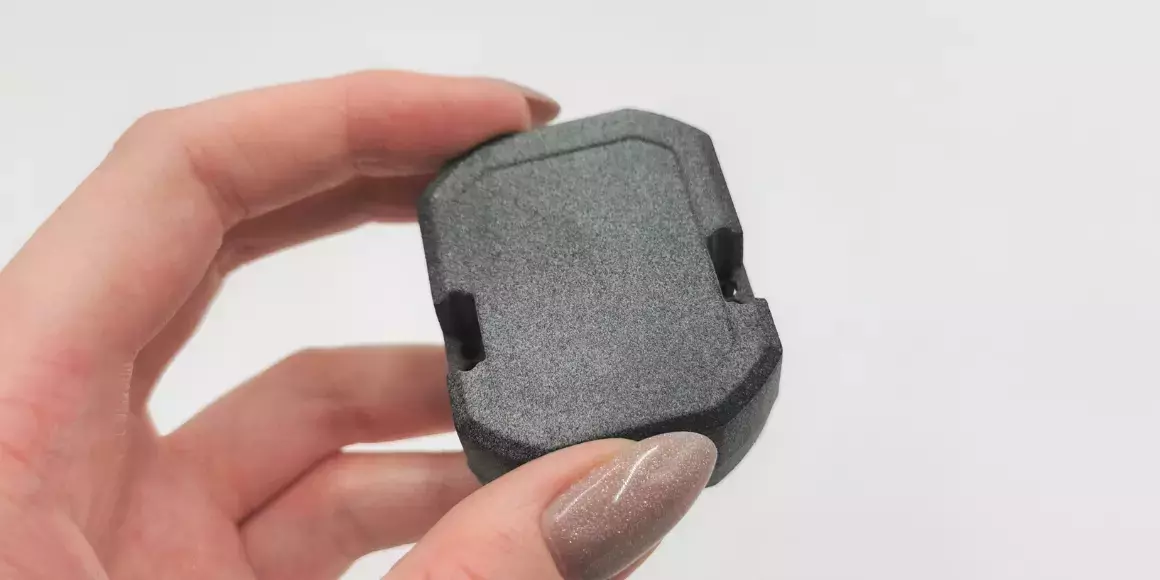
As part of the design process, we are keen to suggest to our clients more ecological alternatives for the materials used in the final product.
Amongst the perfectly smooth surfaces that surround us, we like to draw attention to products that have imperfections, for example, as a result of 3D printing. However, depending on the 3D printing technology and material used, these can give a product unique characteristics.


Whenever possible, we strive to design repairable products that have minimal impact on environmental pollution.
Sustainable design is a process of developing products and services that make the best use of materials, energy, and resources. It's all about reducing waste, reusing existing resources, and conserving energy. This can also save manufacturing, assembly, and logistics costs because goods designed with sustainability in mind typically have fewer parts. Sustainable design is significant because it contributes to environmental protection by reducing our influence on natural resources, increasing air and water quality, lowering emissions, and safeguarding wildlife habitats. It also contributes to the development of more resilient communities by decreasing dependence on nonrenewable energy sources, strengthening local economies, and creating jobs in green industries. We can ensure that future generations have access to the same resources we do now by embracing sustainable design concepts. And, let's be honest: who doesn't like saving money while helping the environment?
Incorporate sustainable strategies
Finding strategies to reduce waste and boost resource efficiency is central to sustainable design. It incorporates minimalism, reuse, and recycling ideas. Minimalism involves starting with less resources and producing things with fewer features and components. Reuse is the creative use of existing materials or components that would otherwise be discarded. Finally, recycling fosters the breakdown of old materials into new raw materials that may subsequently be used to create new products.
By implementing these concepts during product creation, we can ensure that our environmental effect is reduced while still producing appealing and functional items. Sustainable design not only reduces waste, but it also saves energy and creates jobs in green businesses. Finally, it's a win-win situation: you get amazing products while also helping to preserve the earth for future generations.
Want to know more bout incorporating sustainable design priciples in your next project? Contact our design team HERE.
Sustainability advantages
There are various advantages to sustainable design for both product designers and customers. Sustainable design lowers the need for new materials and resources, which keeps costs low for designers. It also enables them to develop items that are more durable and long-lasting, making them more appealing to clients. Most designers are on the cutting edge of making mass-produced goods as eco-friendly as possible. Sustainable design benefits consumers in a variety of ways. For starters, customers can feel good knowing that their purchases are contributing to environmental protection by lowering reliance on nonrenewable energy sources and promoting local economies. Second, sustainability frequently means fewer details and parts, which allows items to be lighter in weight and easier to use while still performing all necessary functions. Third, sustainability frequently leads to higher-quality products that are more durable and require less maintenance over time, saving consumers money in the long run.
Therefore, embracing sustainability provides several benefits to all parties involved - designers, businesses, and consumers alike! The potential environmental impact is enormous; by lowering our reliance on nonrenewable resources, we can help ensure that future generations have access to the same resources we do today.
To learn more about sustainable design have a listen to this episode of IDology - the industrial design podcast:
our blog
If you are interested in the topic of sustainable design, be sure to visit our blog. In the articles created by our team, we share our knowledge, experience and thoughts related to this issue.
#sustainabledesign

Schedule an initial talk and get to know us better! You already have a basic brief? Send it over so we can have a more productive first meeting!
a meeting

